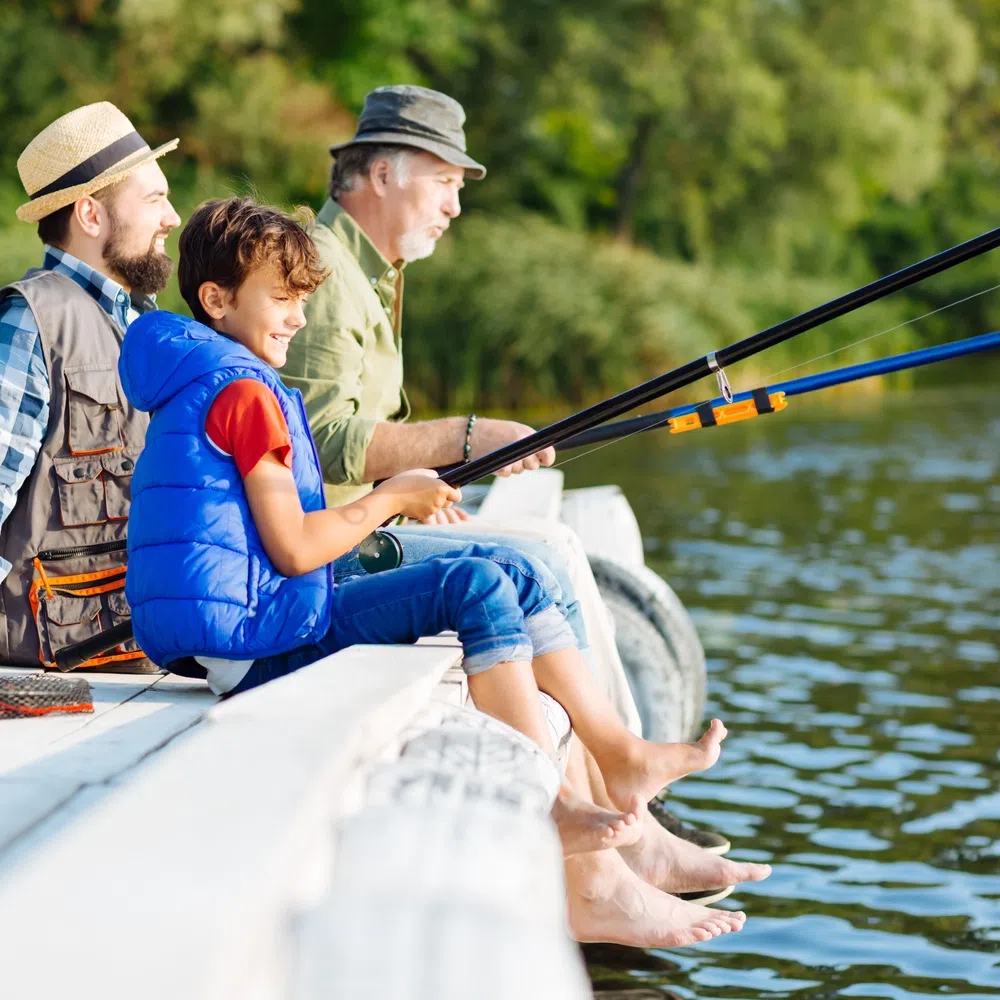Regardless of age, fishing remains a popular pastime for many. Unlike hobbies that require expensive equipment or years of training, fishing offers something for anglers with all levels of experience.
However, knowing a few key techniques can make all the difference between a frustrating day and a successful outing that leaves everyone excited for the next trip. Here, we’ll explore five practical fishing tips for all ages
1. Choose the Right Bait for Your Target Fish
Understanding what fish eat naturally gives you a big advantage. Live bait consistently outperforms artificial lures for beginners because it moves naturally in the water and provides the scent that fish use to locate food.
Earthworms attract bass, trout, and panfish, while red worms are perfect for smaller species. Consider starting with live bait to build confidence, then gradually introduce artificial options as skills develop.
2. Learn the Art of Timing
Early morning and late evening typically offer the best fishing opportunities, as fish are most active during these cooler periods. Overcast days often produce better fishing than bright, sunny conditions because fish feel more secure moving into shallow feeding areas.
Spring brings hungry fish emerging from winter dormancy, making it an excellent time for beginners. Summer fishing requires deeper waters during hot periods, while fall offers consistent action as fish prepare for winter.
3. Explore New Locations
Lakes, rivers, ponds, and coastal areas each offer unique opportunities depending on the type of fish you’re targeting. Look for structures such as submerged logs, rocky outcroppings, or weed beds, as these areas often attract fish seeking shelter and food.
Fishing near inlets or outlets where water flows into or out of a body of water can be especially productive, as fish often congregate in these zones to feed. Using trolling motors while fishing offers additional opportunities, but you’ll need to explore new areas to find the best spots.
4. Perfect Your Casting Technique
Effective casting doesn’t require tremendous strength or complex techniques. Focus on smooth, controlled movements rather than power. A good cast places your bait exactly where fish are likely to feed.
Start with the rod tip low, then bring it back smoothly over your shoulder. As you bring the rod forward, release the line when the rod reaches the 10 o’clock position. This timing takes practice, but it prevents the common mistake of casting too early or too late.
5. Be Patient and Stay Quiet
Fish are extremely sensitive to vibrations and noise. Heavy footsteps on a dock or loud conversations can send fish fleeing from otherwise perfect fishing spots. Approach fishing areas quietly and move deliberately rather than rushing.
Patience often determines fishing success more than any other factor. Fish don’t operate on human schedules, and the best bite might occur just when you’re ready to leave. Give each spot adequate time before moving on to a new location.
Get Ready To Cast Your Line
Fishing skills develop over time, and each outing offers new learning opportunities. With these five practical fishing tips for all ages, you’ll be able to find success, no matter how long you’ve been at it.
Image Credit: Viacheslav Yakobchuk, 285478463





Comments